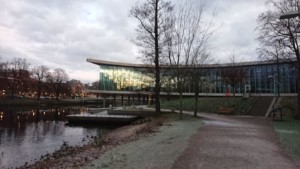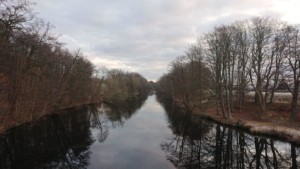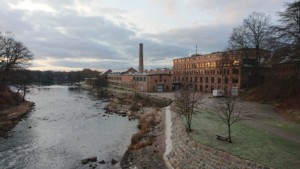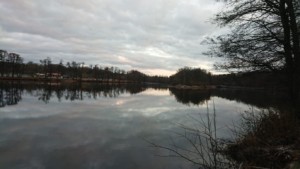Stuart travelled to the Accesia Academy in Sweden to attend their course on Oral Surgery – Reconstruction and Plastics.
The journey was fairly simple with a quick easyJet hop from Edinburgh to Copenhagen, and then a train journey across The Bridge (featured in a famous TV show) into Sweden and then North to Halmstad. On arrival it was cold, wet and dark – just like home!
 Accesia is a veterinary dentistry company, producing premium and novel dental equipment for the veterinary market. It also runs high level continued professional development courses at their academy.
Accesia is a veterinary dentistry company, producing premium and novel dental equipment for the veterinary market. It also runs high level continued professional development courses at their academy.
This course was a dream for Stuart, helping him to continue to develop his dental skills, but also reigniting his passion for wound management and reconstruction.
The two tutors tag teamed throughout the long weekend. Dr Cecilia Gorrel is a human dentist who is also qualified as a specialist veterinary dentist. Dr Gert ter Haar is a veterinary specialists in soft tissue surgery with his main interest in ENT (ear, nose, and throat). They were both brilliant speakers who were very approachable and gave great insight into how to best approach the conditions we were being taught about.
It started with a brief reminder of the basic surgical principles that all surgeons and dentist should aim for. Nothing new here for Stuart, but a great reminder of how we should be approaching all surgeries.

Then it moved onto methods used to reconstruct skin and nose defects around the head and neck. We were taught some techniques used in humans – one of the big differences here being the importance of how we look following surgery – minimal scarring is essential. Whereas in veterinary surgery the most important thing is being pain free and functional. But with a little knowledge of some simple tricks we can achieve good cosmetics without putting our animal patients through anything unnecessary.
Next we moved into the mouth to learn about palate surgery. These can be used to close over holes in the roof of the mouth in situations like cleft palates and following trauma.
We then covered the very common condition covered by the term Brachycephalic Obstructive Airway Syndrome (BOAS). This is seen on the “shorter faced” dogs such as Pugs and French Bulldogs. More and more is being done by responsible breeders to reduce this problem. However, at present, a significant proportion of these type of dogs have problems that may benefit from surgery.

The next subject was quite a dramatic one – maxillectomies and mandiblectomies. This is where we have to remove part (or all) of the mandible (the lower jaw), or part of the maxilla (the upper jaw and part of the face). This would usually follow severe trauma or tumour resections. These are very major surgeries but it was amazing to see how well these patients can do following what appears to be such massively invasive surgery. Often they can end up with minimal to no outward scarring and being fully functional and back to eating, drinking, and playing as normal.
Ear surgery was next. This is an area Stuart has a lot of experience in already, however, he found it great to learn some tips and tricks from the specialists.
Then it was the last topic – fractures! Stuart has a lot of experience with long bone fractures in the legs – but limited experience of fractures in the mouth. The approach to repairing the fractures is very different, mainly due to the anatomical differences of the bones around the mouth compared to the legs. Realigning the teeth to give perfect occlusion is the aim and is often done by applying temporary “braces” to the teeth to support the fracture while it heals. This returns our pets to normal, pain free, function almost immediately and gives amazing long term results.

Running the course in the lead up to Christmas meant that the course dinner consisted of traditional Swedish Christmas food. This featured more different versions of herring than seemed possible! Fortunately Stuart loves fish and found it delicious. Also, fortunately, eel wasn’t on this Christmas menu!…
The journey home was the return train trip back to Denmark and then a quick, this time Ryanair, flight back to Edinburgh ready for work first thing Monday morning.
This was an absolutely brilliant course where Stuart was able to reinforce lots of his knowledge, and also learn a number of new techniques which will allow him deal with many more conditions that we regularly see in our patients at Westport Veterinary Clinic. He has added his certificate to his large and growing collection of continued practice development achievements.

